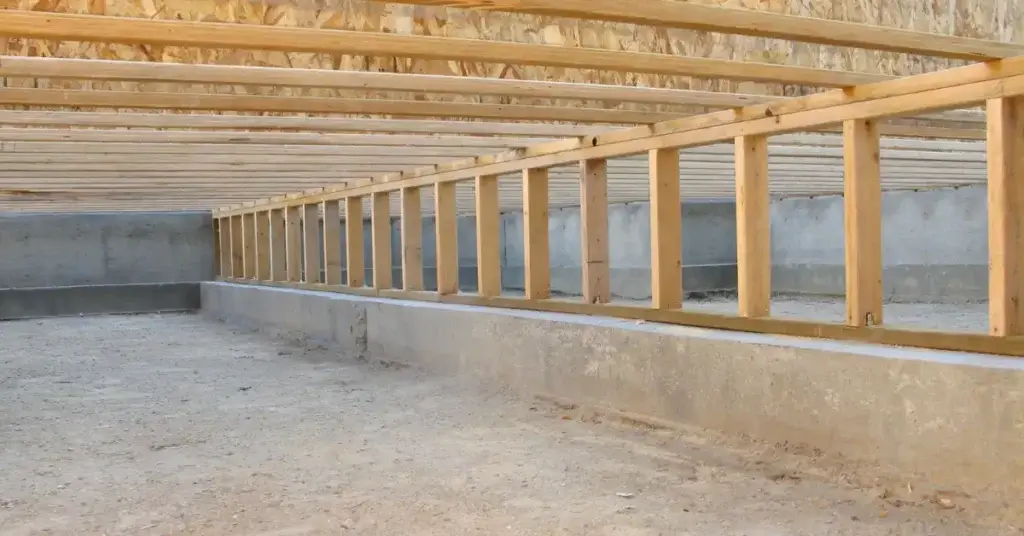
How to Encapsulate a Crawlspace
Out of sight, out of mind, right? That’s how many people feel about their crawl space—the unused and unfinished space beneath your home between the ground and the first floor. It may actually pay to keep your crawl space in mind, though, as neglecting it can lead to some major problems down the line including poor air quality, structural issues, and pest infestation. Learn what crawl space encapsulation is and how to encapsulate a crawlspace with care.

How a Crawl Space is Encapsulated
If you’ve decided to encapsulate your crawl space, there are a couple of options available to you. When learning how to encapsulate a crawlspace, you can either take the DIY route, or you can hire a team of professionals to do the job. We always recommend hiring a professional crawl space care company to perform this service for you, as there are many steps involved when learning how to encapsulate a crawl space.
Crawl space encapsulation isn’t the sort of job that you can do yourself unless you have an exceptional amount of experience doing it and a wealth of resources; in other words, you’ll probably need to contact a professional company that offers the services.
Crawlspace encapsulation can be broken down into 4 steps:
- Thorough inspection and assessment that will help the service provider develop a plan of action.
- Floor and foundation lining with a reinforced polyethylene liner that seals possibly moisture entry points and weak spots, and prevents any moisture from seeping in.
- Sealing all openings in the sidewalls, including vents and doors leading to the exterior in order to stop the infiltration of outside air.
- Humidifier installation, to remove excess humidity that causes moisture and mold issues. Special crawl space-specific dehumidifiers also discourage specific insects like termites and other wood-destroying insects, along with other pests.
DIY Crawl Space Encapsulation
If you don’t mind getting down and dirty, you may want to try encapsulating your crawl space yourself. Before you get started, though, take a moment to carefully consider the skills and experience needed for the job. In many cases, it may be more effective, cost-efficient, and safer to hire a professional.
Note: we always recommend hiring a professional for crawlspace care!
If you do decide to go ahead with the DIY, you’ll first need to prepare the area to be sealed. To do so, you’ll want to examine the floor plan to formulate your plan for the process, as well as check for and remove any mold, pests, and fungus to be sure you aren’t trapping any of those within the barrier. You should also make sure your home is properly graded and has an effective drainage system in place—encapsulation does not prevent all water from getting in, so drainage is key to avoid water damage.
Then, replace and repair any damaged wood or other structural elements in the crawlspace. You may also want to spray a mold-prevention solution in the area. Seal up any openings that may let moisture in using vent covers or hydraulic cement.
Once all of the prep is done, it’s time to lay the vapor barrier. You can purchase these online, or at home improvement stores like Home Depot and Lowe’s. First, wrap the piers in the crawlspace in the barrier, cutting closely around plumbing, writing, and any other obstacles. Then, use waterproof tape to secure the barrier around any piers and pipes. Finally, lay down a layer of polyethylene sheeting, which can also be purchased at home improvement retailers, and secure it to the walls.
The very last step is the installation of a dehumidifier to ensure that moisture stays out in the future. You can even find dehumidifiers specifically designed for crawl spaces at specialized online retailers.
Professional Crawl Space Encapsulation
Crawl space encapsulation requires skills, time, and materials that make a DIY project a bit overwhelming for many. In order to ensure proper installation, and avoid wasting valuable time and money, you may want to consider professional crawl space encapsulation.
At A-1 Pest Control, our professional crawl space encapsulation teams start with a thorough home inspection. With years of experience in the field, we know just what to be on the lookout for, and how to properly prepare a crawl space to be sealed.
Our teams can check for mold, pests, and damage, and will then take the steps to remove and prevent these issues before laying down the encapsulation. Whether it’s making sure your home is properly graded, enduring an effective drainage system, or securely sealing all openings, we have it all covered.
A professional team also brings the benefit of the latest technology and products for the most effective encapsulation. A-1 Pest Control uses a reinforced polyethylene liner not available at retail stores, for the most effective seal against moisture and the effects of other natural elements. Once that is laid and secured, we install state-of-the-art dehumidifiers, designed to operate in crawl spaces. This dehumidifier also works to deter termites and other pests.
Why Encapsulate Your Crawl Space
The benefits of encapsulating your crawl space are hard to overstate. This portion of your home is part of the foundation for the entire structure, and in order to keep your home safe and sound for years to come, you first have to properly care for that foundation.
Lower Moisture Level
Crawl space encapsulation keeps moisture and humid air from seeping into the vital structural elements of your home. This can help prevent mold and fungal growth, wood rot, and even pests that may be drawn to moist environments.
Higher Air Quality
Those lower moisture levels, along with the removal and prevention of mold, mean cleaner, drier, and healthier air circulating throughout your entire home. That can help with allergies, along with other potential long-term health issues associated with poor air quality, and leave your family with a safer, healthier home.
Lower Risk of Pests
Sealing off your crawl space—along with the addition of a pest-repelling dehumidifier like those used by A-1—can help keep critters and bugs away from your home. This added layer of protection can help keep away invaders like:
- Termites
- Rodents
- Silverfish
- Spiders
- Fire ants
Structural Stability
Excess moisture, along with the damage that can be caused by pests like termites, can lead to a weakened structure supporting your home. Dry floors and framing keep your foundation strong, which is great for the sustainability of your home.
Protect HVAC Systems
Many homeowners have their HVAC system in their crawl space. Keeping it there, however, does make it vulnerable to pests, humidity, and other nuisances that can cause damage and shorten its life. Sealing off that space prevents these factors from affecting your system.
Even if your HVAC isn’t in your crawl space, the reduction of humid air in your home can help your system operate more efficiently, and use less energy. This lowers your monthly bills, and helps your system last longer!
A-1 Pest Control Termite Solutions
The benefits of crawl space encapsulation, especially in a humid climate like that in North Carolina, are obvious. If you’re looking for professional crawl space encapsulation services in NC, A-1 Pest Control can help.
Contact us today to learn more about sealing your crawl space, to keep your home safer and healthier for years to come!

